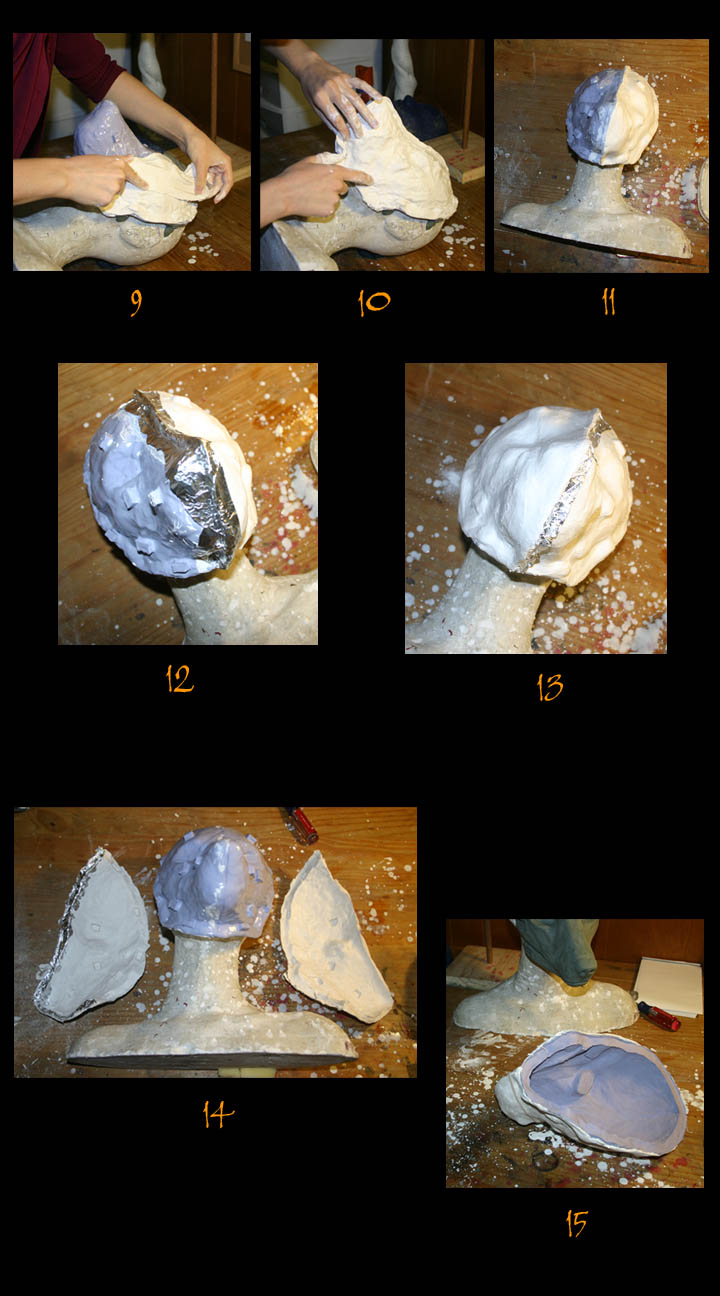ShopDreamUp AI ArtDreamUp
Deviation Actions
Suggested Deviants
Suggested Collections
You Might Like…
Featured in Groups
Description
An overview to explain how we mold and cast our mask bases.
WEAR CHEMICAL RESISTANT GLOVES, A RESPIRATOR, AND PROTECTIVE CLOTHING!
I'll say it again:
WEAR CHEMICAL RESISTANT GLOVES, A RESPIRATOR, AND PROTECTIVE CLOTHING!
DO NOT DO THIS NEAR FOOD SURFACES! DO NOT EAT OR DRINK NEAR YOUR WORK AREA! DO NOT HANDLE OR USE THESE CHEMICALS NEAR CHILDREN OR PETS!
If I see anyone else blatantly ignoring basic safety precautions, I absolutely will take this tutorial down.
PLEASE READ the whole description! It explains all the steps, lists materials used here, and links to smooth-on.com where I buy my rubbers and resins.
I WILL NOT answer any questions the answers to which are in the descriptions or can easily be answered with a visit to smooth-on's website (or even a quick google search). I will also not detail this process further.
Description of steps:
9.) I am using plaster bandage* to make the mothermold (also called a matrix or support shell). I moisten several long strips (probably about half a roll or more) and start applying them to the mask surface at the edges.
10.) The mothermold is done in two halves. I build up a ridge in the middle where the two halves wil meet.
11.) The first side is completed, smoothed out, and left to fully set.
12.) I apply a strip of aluminum foil to the ridge that I built up on the first half of the mothermold. This will help separate the two halves later.
13.) The second half of the mothermold is applied same as the first.
14.) Once both halves are set (and preferably completely dry), they are gently pried apart and removed.
15.) And finally, the silicone is removed from the model, nested in the mothermold (the two halves of which are held together with a rubber band), and the mold is ready for casting. Notice that the original model has remained completely undamaged.
CONTINUED:
Part A: [link] Part C: [link]
---------------------------------------------------------------------------
* not necessarily everyone's mothermold material of choice. I like it because it's fast, lightweight, and fairly inexpensive. However, it's far less durable than Gypsum cement, like Ultracal. Again, though, with my high mold turnover rate anyway, I don't like to invest too much in these, and the weight of gypsum really bothers me. For a very durable mold, I would recommend a thick Gypsum mothermold.
To cut down on durability issues, though, I never use the craft grade bandages, always medical grade.
Materials used here:
Medical grade plaster bandages
Aluminum foil
To learn more about the materials I'm using, and to learn more about mold making and casting basics, visit Smooth-On.com: [link]
WEAR CHEMICAL RESISTANT GLOVES, A RESPIRATOR, AND PROTECTIVE CLOTHING!
I'll say it again:
WEAR CHEMICAL RESISTANT GLOVES, A RESPIRATOR, AND PROTECTIVE CLOTHING!
DO NOT DO THIS NEAR FOOD SURFACES! DO NOT EAT OR DRINK NEAR YOUR WORK AREA! DO NOT HANDLE OR USE THESE CHEMICALS NEAR CHILDREN OR PETS!
If I see anyone else blatantly ignoring basic safety precautions, I absolutely will take this tutorial down.
PLEASE READ the whole description! It explains all the steps, lists materials used here, and links to smooth-on.com where I buy my rubbers and resins.
I WILL NOT answer any questions the answers to which are in the descriptions or can easily be answered with a visit to smooth-on's website (or even a quick google search). I will also not detail this process further.
Description of steps:
9.) I am using plaster bandage* to make the mothermold (also called a matrix or support shell). I moisten several long strips (probably about half a roll or more) and start applying them to the mask surface at the edges.
10.) The mothermold is done in two halves. I build up a ridge in the middle where the two halves wil meet.
11.) The first side is completed, smoothed out, and left to fully set.
12.) I apply a strip of aluminum foil to the ridge that I built up on the first half of the mothermold. This will help separate the two halves later.
13.) The second half of the mothermold is applied same as the first.
14.) Once both halves are set (and preferably completely dry), they are gently pried apart and removed.
15.) And finally, the silicone is removed from the model, nested in the mothermold (the two halves of which are held together with a rubber band), and the mold is ready for casting. Notice that the original model has remained completely undamaged.
CONTINUED:
Part A: [link] Part C: [link]
---------------------------------------------------------------------------
* not necessarily everyone's mothermold material of choice. I like it because it's fast, lightweight, and fairly inexpensive. However, it's far less durable than Gypsum cement, like Ultracal. Again, though, with my high mold turnover rate anyway, I don't like to invest too much in these, and the weight of gypsum really bothers me. For a very durable mold, I would recommend a thick Gypsum mothermold.
To cut down on durability issues, though, I never use the craft grade bandages, always medical grade.
Materials used here:
Medical grade plaster bandages
Aluminum foil
To learn more about the materials I'm using, and to learn more about mold making and casting basics, visit Smooth-On.com: [link]
Image size
720x1296px 146.52 KB
© 2008 - 2024 Qarrezel
Comments64
Join the community to add your comment. Already a deviant? Log In
Thanks! 



































